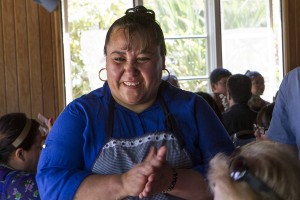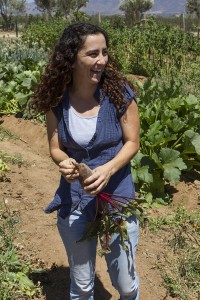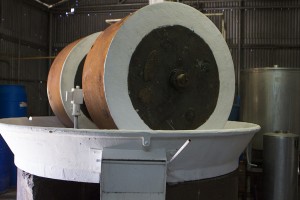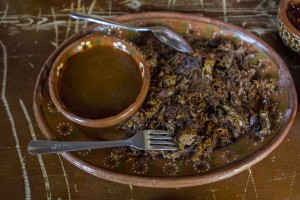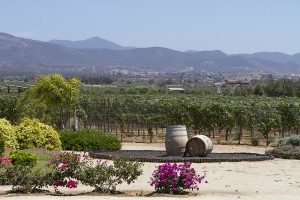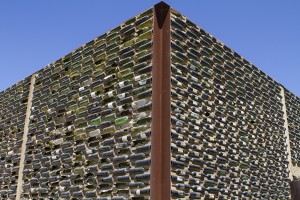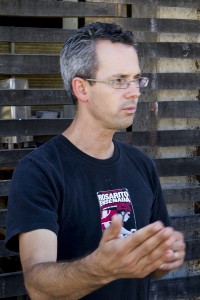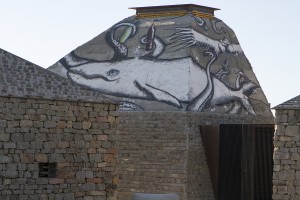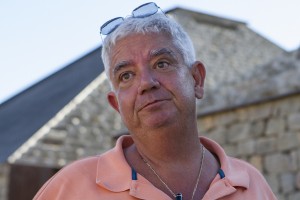 Having lived in Baja California for two years, just about an hour south of the border, I was excited at the prospect of a return visit to explore the Valle de Guadalupe. When I lived there from 2000 to 2002, the Guadalupe valley existed as a wine region and was well established, but nothing like it is today. The number of wineries now along the Ruta de Vino hovers around 100. There are world-class hotels and restaurants and stellar wine in a stunning setting all within a two-hour drive from San Diego.
Having lived in Baja California for two years, just about an hour south of the border, I was excited at the prospect of a return visit to explore the Valle de Guadalupe. When I lived there from 2000 to 2002, the Guadalupe valley existed as a wine region and was well established, but nothing like it is today. The number of wineries now along the Ruta de Vino hovers around 100. There are world-class hotels and restaurants and stellar wine in a stunning setting all within a two-hour drive from San Diego.
We left Tijuana in the morning and headed south until we got to La Misión and then turned east, taking the road to El Tigre. Memories came flooding back to me as these were roads I explored often as a resident. Our first stop was at La Cocina de Doña Esthela. As we entered we noticed a packed house and then saw women making tortillas by hand. We sat down and enjoyed fresh juice, shredded lamb and machaca accompanied by those piping hot tortillas, salsa, onions and cilantro. It’s no mystery to me why it was named the Best Breakfast In The World by FoodieHub. Doña Esthela is gracious and charming and it’s no mystery to me why her place is so popular.
Next up was a stop at Finca La Carrodilla. Owner Fernando Pérez welcomed us with his 2014 Chenin Blanc, one of four varieties grown on the 20 acre property. La Carrodilla comes from a Catholic virgin in Mendoza, Argentina, the virgin of the vines. Fernando’s mom fell in love with the virgin and when they opened this, their second winery in the Valle de Guadalupe, mom hinted strongly it would be a good name. All except for one of their wines is a mono-varietal, produced from a single grape variety. The one exception is Canto de Luna which translates to lullaby. The 2014 is a blend of equal parts Shiraz, Cabernet Sauvignon and Tempranillo. Winemaker Gustavo Gonzalez has a rich resume including 17 years as red winemaker at Robert Mondavi. One of his wines garnered a 100 point score. “We try to promote life” says Pérez, citing their organic certification, the first in the valley. He calls wine a “very human thing.” They employ biodynamic processes and have a veggie garden, cows, chickens and bees on the property. Jimena Rábago is their agronomist and she oversees the lush garden. Much of what is grown there is sold to restaurants and farmers markets.
The first thing that struck me about Estación de Oficios El Porvenir was its architecture. One building is made entirely of wine barrel staves, another of box springs and concrete and yet another features wine bottles. The winery is the fourth for acclaimed winemaker Hugo D’Acosta. His brother Alejandro is the architect. Tomas Eglin comes to the Valle de Guadalupe by way of Switzerland. He provided us chilled beers on a warm summer afternoon as we toured this fascinating facility. Not only is it a winery, it’s a distillery, an olive oil production facility and a school. Tomas and Hugo offer a four-weekend class where students buy grapes and then crush, press, ferment, put in barrel, rack, filter and bottle their wine. Students come from Mexico City, Los Angeles and other spots and range from doctors to lawyers to housewives. Future plans include a brewery, a cheese-making plant and an inn. We enjoyed their exceptional wines with their signature crab enchiladas.
 We ended this remarkable day at a winery that just opened in 2014, Clos de Tres Cantos. Joaquin Moya and his wife Maria beam with pride over their creation and with good reason. They have built a winery unlike any other I have ever seen. Pyramids with murals of sea life greet you. Over-sized concrete chairs and sofas dot the patio. Empty wine bottles are embedded in cement. They built the winery using natural ingredients, most of them sourced locally. The stone comes from nearby La Misión. They have utmost respect for the people they hired to do their labor, emphasizing their desire to give them dignity and a chance to master their craft. We walked downstairs and what we saw from the outside suddenly made sense. The bottles in concrete provide natural light. The architecture is the work of Alejandro D’Acosta, whose work we had seen earlier at El Porvenir. It’s visually stunning. We went back upstairs and tasted their impressive wines, most notably Nada (Spanish for nothing) and Tu Mismo. We enjoyed a delicious array of artfully prepared hors d’oeuvres along with local olive oil and fresh bread with the wine.
We ended this remarkable day at a winery that just opened in 2014, Clos de Tres Cantos. Joaquin Moya and his wife Maria beam with pride over their creation and with good reason. They have built a winery unlike any other I have ever seen. Pyramids with murals of sea life greet you. Over-sized concrete chairs and sofas dot the patio. Empty wine bottles are embedded in cement. They built the winery using natural ingredients, most of them sourced locally. The stone comes from nearby La Misión. They have utmost respect for the people they hired to do their labor, emphasizing their desire to give them dignity and a chance to master their craft. We walked downstairs and what we saw from the outside suddenly made sense. The bottles in concrete provide natural light. The architecture is the work of Alejandro D’Acosta, whose work we had seen earlier at El Porvenir. It’s visually stunning. We went back upstairs and tasted their impressive wines, most notably Nada (Spanish for nothing) and Tu Mismo. We enjoyed a delicious array of artfully prepared hors d’oeuvres along with local olive oil and fresh bread with the wine.
Our first day having drawn to a glorious ending, we soaked in the sunset and prepared for a very busy next day.
Tom Plant launched WINEormous in 2009 and is a member of the International Food Wine and Travel Writers Association. Based in Temecula, California, he offers intimate winery tours for no more than seven people. Tour details and pricing are available at www.temecula-tours.com. Call now to book your Temecula Winery Tour at (951) 907-9701! Ask about special discounts.


